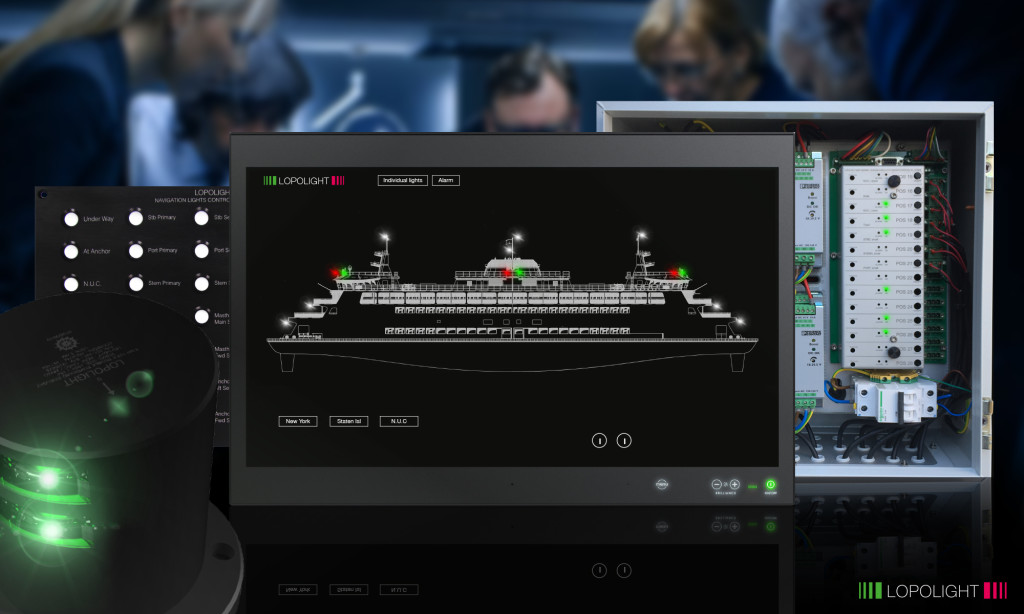How Lopolight used the learnings from creating solutions for autonomous vessels and made them the best choice for the everyday application

The recent advances in autonomous navigation have implications on bridge equipment such as navigation light controllers, some of the innovations made here have now been made available to regular shipping.
Unmanned begs for automation.
When sailing with an unmanned bridge it is critical that the navigation light system reacts automatically to events such as a failing light or a failing power supply, by immediate switching to the backup system. Obviously, the alarm shall be raised and communicated in such an event – maintaining safe navigation and compliance to regulations.

Several ways to achieve remote control.
At Lopolight we have observed that remote operation and alarm reporting can be achieved in several ways. In some cases, our clients have interfaced to our NMEA 0183 serial interface, other have used the more sophisticated and less hardware dependent RS-485 proprietary protocol to control and monitor the Lopolight installation.
Recently the launch of a Linux based control and monitoring system with touch screen operation has opened further avenues for remote control and monitoring, here we have seen systems being configured using a TCP/IP connection over the vessels Ethernet to Modbus TCP PLC control. Lopolight also offers an API for establishing full control from 3rd party systems.
An interesting development comes from Carling Technologies and Maretron where they have adapted the Lopolight Linux based control and monitoring system to be integrated into their N2KView which has a remote-control option.
We recognize that this is a dynamic field and will pursue opportunities to integrate our solutions with leading system providers in the immediate future.
The core promise from Lopolight
It is quite straightforward: A navigation light control and monitoring system must comply with the rules such as IMO 253(83) and subchapter M. It shall be type approved, typically by ABS.
At Lopolight we are proud to claim that we are complying and that we have ABS PDA approval.
Taking a step further and automating the response of the navigation light control and monitoring system to events, such as the automatic switch-over to the backup light or the backup power supply comes natural to us.
1-button operation scenarios such as ‘under way’ or ‘towing’ is also standard with any Lopolight system.

The Linux based control and monitoring system has even further levels of automatization, imagine a double ender ferry, where the task is to change direction of travel, now the system with one command can turn on the lights for the desired direction of travel and turn off the lights for the other direction.
While not the scope of this article, it is good know that the Lopolight system is scalable to control up to 60 navigation lights, and that it can be configured to any Voltage. The user interface is custom designed to every vessel.
An unexpected, but welcome, implication
Imagine that we can remotely control and monitor the navigation lights on vessels far away, how about vessels close to you, actually - how about the barge that I am pushing?
With a simple wi-fi bridge between the barge and the pusher this can be easily and economically achieved, no longer is there a need for the crew to climb onto the barge to operate the lights, and more importantly – any alarms and automated responses will come to the bridge of the pusher also.
How can I benefit from this?
The advances in automation, with navigation lights as an example here, can benefit all vessels and any watchkeeping officer, by demanding less attention, freeing up time for more observation and better decision making. Fitting well to the demands of reduced manning and of course unmanned vessels.
See more at www.lopolight.com


.JPG.small.400x400.jpg)

